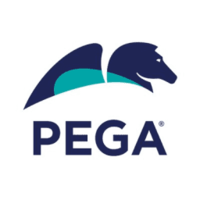By Ralph Booth (Pega Express Director) and Jarrod Bezzina (Consulting Manager)
A popular expression in the theatre is, “Always leave them wanting more.” This sums up the Pega Express™ approach and the Adopt phase, the final Pega Express™ phase, but most definitely, not the final curtain.
Adopt is not just the last act where the application goes live and we get valuable feedback from users, it is a culmination of readiness activities designed to ensure the client is able to fully benefit from their Pega investment and initiate their next release. All great show endings should be exciting, and this is no different, it is about making sure we have achieved what we have set out to achieve at the beginning (this is a fundamental quality of the Pega Express approach).
In this blog, we will share more about the key activities to ensure successful adoption and a rapturous standing ovation, requesting an encore.
‘Cast members please follow the Script’
The Day 1 Live Plan is first introduced during the Discover phase to ensure alignment on the vision and scope of the project. Like a theatre script this should be reviewed regularly throughout the project to ensure you are on target to achieve the client’s business outcomes, and again during Adopt to confirm you have delivered them. Learning this by heart is important, as this articulates what the world will look like for the organization once the application goes live. Successful release and adoption of the application will only occur when team expectations are aligned, and business outcomes are met through achieving the Day 1 Live Plan.
Final preparations and rehearsal
As you approach the time to move your application to production, now is a good opportunity to complete your final preparations and calm any last-minute nerves. Do a thorough review of all completed User Stories and other backlog items which have been built, tested but more importantly accepted by the Product Owner. This should include any Bugs and Defects identified during your testing and ensure the appropriate remediations are incorporated into the final product and possible workarounds are documented. Sufficient performance and security testing should now have been completed and any concerns addressed or mitigated. This may include Penetration Testing by security teams to ensure the application is not susceptible to attack from malicious sources.
Tools like stage props, available within the platform, determine the health of the application:
- Application Quality Dashboard - provides you with a snapshot of the guardrail score and automated test coverage
- Pega Diagnostic Cloud - provides hardware and performance warnings that will give you an understanding of how the application might perform in a production environment. Pega Diagnostic Cloud is also a good way to monitor the performance of your application in production.
As you approach go-live, complete your ‘dress rehearsal’, determine your deployment strategy, start preparing all the components needed in a list, and check them off as they are completed. The Pega Deployment Manager app can simplify this and fully automate your continuous integration and delivery (CI/CD) workflow. If this is your debut release, ensure the Deployment Manager is configured correctly. This will also prepare you for future releases or more importantly any urgent updates to support unforeseen application problems during the release.
Final Call, Final Call!
In addition to readying the application for go-live, as part of your final call on opening night the business should also be prepared for launch. Business readiness encompasses many traditional activities, such as installing the new application, writing agent scripts, and enabling business users in using the new solution. While this all comes together in the Adopt phase, our approach recommends that you progress this work alongside the Build phase, so you are ready and start to get feedback from your users from day one.
Ladies and Gentlemen, please take your seats
Go-live support is an important ingredient of a successful deployment strategy, particularly for the period immediately following go-live. While this includes making sure a relationship is formed with Pega’s Global Customer Services, this really goes way beyond the physical deployment itself (which should have a detailed supporting plan of tasks, timings with owners and understudies).
Pega Express encourages you to go further, for example, the project team should be available with your audience of end-users to help resolve any issues in the call center and to witness firsthand with users how the application is being used to continuously drive improvement and enhance the user experience.
Get ready for the post show reviews
Driving continuous improvement leads us nicely into the next point, about measuring the outcomes documented in the Day 1 Live Plan. Each objective should be assessed with the business in the Adopt phase to identify and agree on a set of metrics to determine the business objectives were successfully achieved. These metrics can be enhanced with the use of data from Pega Diagnostic Cloud to monitor usage patterns and adoption. Out of The Box reports like Analyze Performance, Monitor Processes, and Service Level Performance are also valuable to show the progress of each Microjourney™ at different stages.
Enjoy the standing ovation
Once the application is live, you should be gaining valuable feedback from real users on how the application and how business outcomes are performing. Now is a good time to pause and reflect on how the project has fared overall. Release Retrospectives are invaluable opportunities to ask what went well throughout the project (that you would like to repeat) and what did not work out brilliantly that you would like to improve upon as you start to consider your next release. A great way to achieve this is to get the project team to write feedback for each phase of the project - Discover, Prepare, Build and Adopt - and for the entire team to read and build an action plan from it. Release Retrospectives are also a great moment to celebrate the achievements of the team before your start your next MLP. This is your standing ovation, take a moment to enjoy the applause.
On with the next Show!
The planning of your next release or performance should have started but the Adopt phase will give you the opportunity to review and take some lessons learned that were identified in the Release Retrospective. The team may have identified some critical enhancements or feedback from users that may change priorities for the next release. Discuss these with the product team and business stakeholders so they are addressed but also ensure new business capabilities are included to build on the value delivered.
This process should support a quick transition to start the next Pega Express performance. Adopt is not the end, it marks the transition to the next release, like all good runs in the West End or Broadway, you quickly move onto the next performance to deliver once again value and excitement. Leaving them always wanting more.
Don't Forget
- JOIN THE CONVERSATION on Collaboration Center
- FOLLOW @PegaDeveloper on Twitter
- SUBSCRIBE to the Pega Developer Podcast on Spotify or via RSS


